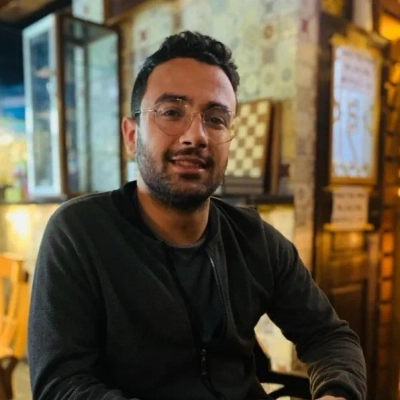How to Balance Financial Control and Business Growth Successfully
Balancing financial control and business growth is a critical challenge for many organizations. This article delves into strategies for achieving this balance, drawing insights from industry experts. Readers will discover practical approaches to empower intentional growth, prioritize trust and safety, and leverage experience in financial decision-making.
- Financial Control Empowers Intentional Growth
- Prioritize Trust and Safety Over Rapid Expansion
- Balance Innovation Fund with Measurable Results
- Enable Growth Through Controlled Experimentation
- Implement Layered Investing for New Initiatives
- Leverage Experience to Guide Financial Decisions
Financial Control Empowers Intentional Growth
That balance is exactly what I focus on as a Fractional CFO — helping CEOs stay financially safe without playing small.
Most business owners think financial control means restriction, but it actually gives you the power to grow intentionally, not impulsively.
Here's how I approach it:
First, we establish clarity and control:
1. We get clear on your actual profit margins
2. Build cash reserves for taxes, payroll, and planned growth
3. Map out your baseline operating costs, so you always know your break-even
Then, we create a growth runway:
1. Set aside part of your profit for big moves like a launch or new hire
2. Analyze the ROI of decisions before acting — not after it's too late
3. Test ideas in low-risk ways to avoid major financial setbacks
My approach to risk management is simple:
It's not about avoiding risk. It's about understanding it, planning for it, and moving with intention. That's what allows you to scale without feeling like everything's on the line.
You're not here to play defense. You're building something meaningful. My job is to make sure you're doing it with the right financial foundation.

Prioritize Trust and Safety Over Rapid Expansion
One December, a couple from New York booked a last-minute airport transfer to their hotel through our site—what they didn't know was that they'd just avoided a scam that had cost another traveler over $600.
That moment became a defining one for me. It reminded me why I built Mexico-City-Private-Driver.com: to offer peace of mind in a city that can be overwhelming to navigate. Balancing financial control with innovation isn't just about spreadsheets—it's about choosing where not to compromise. I've turned down countless "growth hacks" that promised instant traffic or profit but didn't align with our standards of transparency and safety.
I reinvest cautiously, guided by two principles: clarity and predictability. For every new feature—be it online luggage info, clearer pricing logic, or multi-lingual driver protocols—I ask myself: Will this reduce friction for the traveler? Can we implement it without sacrificing service reliability?
On risk, I follow a simple rule: if it puts a guest's trust at risk, it's not worth the upside. That's why we built an entire backend where each booking is confirmed by both origin and destination, and why we only work with vetted, local drivers—no gig platforms or outsourcing.
Growth for us comes not from aggressive expansion, but from earning one good review at a time. It's slower, but it's solid. Since 2022, we've grown bookings by over 150% without outside capital—proof that responsible growth and innovation can go hand in hand when you put traveler safety and experience first.
Balance Innovation Fund with Measurable Results
I've come to realize that balancing financial control and innovation requires a combination of discipline and a solid trust in data. We maintain clear budgets while also setting aside a dedicated "innovation fund" that allows us to experiment thoughtfully, whether that's trying out new tools, expanding our product line, or launching campaigns that could yield a high return on investment.
To keep risks in check, I rely on three key factors: ensuring alignment with our main goals, setting time limits for testing, and guaranteeing measurable results.
For instance, we once tested an AI-driven editing tool with a small team before rolling it out more broadly. We tracked efficiency improvements and costs before making it a permanent part of our workflow.
My approach is straightforward: encourage growth while holding everyone accountable. Innovation without oversight can waste resources, and strict control without room for flexibility can hinder progress. Ultimately, it's about viewing risk as an opportunity for informed decision-making rather than something to avoid.
Enable Growth Through Controlled Experimentation
The key is shifting from "control vs. growth" to "control enabling growth." Instead of saying no to new ideas, finance should ask: "What would make this idea safe to test?" That mindset builds trust with product and operations teams without letting risk run wild.
For example, we set up lightweight spend thresholds and pre-approved pilot budgets. If an experiment works, it gets scaled with tighter oversight. If it doesn't, the financial exposure stays minimal. It's like putting guardrails on a racetrack, not slowing down innovation, but just preventing crashes.
Risk management becomes proactive, spotting patterns in project ROI, not just policing costs after the fact. It's faster, smarter, and honestly, way more fun.

Implement Layered Investing for New Initiatives
The first line of action is the disciplined, layered investing model of new initiatives. I do not spend large amounts of money and implement it all at once; instead, I allocate a specific and smaller budget for the implementation of pilot programs. As an example, research into smart home automation could begin with $5,000 of training and initial inventory costs. When that particular pilot proves to have good returns, say $15,000 of new revenues in three months, we then make a larger investment of $20,000 to scale. This approach is opposite to investing heavily in the short term based on perceived potential, with the aim of controlling finances while still encouraging innovation.
My fundamental philosophy regarding risk management is that I need to attempt to define and address specific, high-impact financial risks in advance, rather than trying to avoid all risk. For example, when buying expensive equipment that costs $40,000, the buyer should have proper insurance that covers the value plus 10 percent, and an emergency fund of at least $10,000 to cover potential damages. I also diversify the client base, ensuring that no single client accounts for more than 15 percent of our monthly revenue. This approach ensures that the failure of one big project does not put the entire business at risk. It is concerned with developing strong financial shock absorbers to pursue new opportunities with calculated risk.

Leverage Experience to Guide Financial Decisions
When it comes to balancing financial control with business growth and innovation, experience is everything -- both my own and that of my peers. As a seasoned leader, I consider it one of my greatest assets.
Before taking any major financial leap at Perpetual Talent Solutions, I take a hard look at our history of successes, missteps, and everything in between. I'm not just reflecting; I'm analyzing trends, performance data, and outcomes to identify patterns that inform smarter decisions. I compile internal case studies and reference points that speak directly to the choices in front of us today.
I also turn to my trusted network of associates, partners, and peers, going beyond surface-level conversations. I study their wins and losses with the same intensity as my own, because every lesson gleaned has the potential to shape my own strategy and risk management approach.
What makes this process effective is that it's personal and sector-specific. General advice on risk is everywhere, but it often lacks the context that makes it actionable. Digging into lived experience within your own niche is almost always more valuable than broad theoretical guidance.




